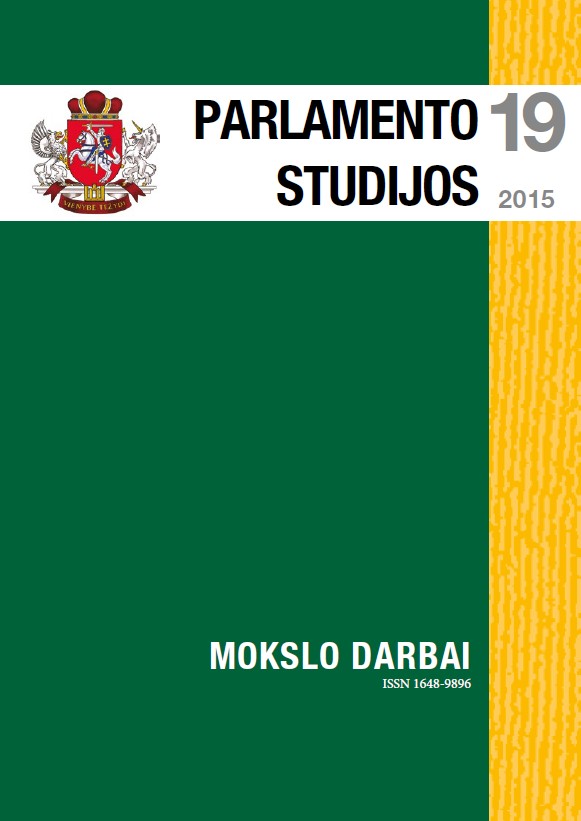Lithuanian Riflemen’s Union Aspect of the History of Parliamentarianism in Lithuania: Seimas Case
DOI:
https://doi.org/10.51740/ps.vi19.178Keywords:
Lithuanian Riflemen‘s union, Constituent Assembly (Seimas), law, Ministry of National Defence, parliamentarian, “šauliškumas” (ideology of Riflemen)Abstract
In the article there is analysed the subject of Lithuanian Riflemen’s union in the work of Constituent Assembly (Seimas). The movement of LRU members who worked in Seimas in 1920 - 1922 is analysed according to the biographical dictionary of Seimas members as well as LRU Central Board meetings, the protocols of Seimas and historiographical positions, in order to establish a legislative framework for LRU. Paramilitary organization - Lithuanian Riflemen Union started its activities during the fights for Lithuanian independence and therefore earned the trust from Lithuanian government. In accordance with the principles of activities, this organizations was not without analogies, but its activity was regulated by laws and that is why LRU was an exclusive organization. Riflemen support at the political level was not the same. Seimas placed confidence in the organization (for example in 1921 there was adopted LRU law), while the Ministry of Defence comprehensively wanted to control the Riflemen and remove the self-management capabilities. As a proof that Lithuanian government appreciates the activity of organization’s members, in 1921 there was adopted the first LRU law and in addition established only partial dependence from the Ministry of Defence.
The aim of the work is to determine the impact of Seimas members, who belonged to Lithuanian Riflemen’s Union, for the creation of the legislative base of the LRU. The goal of the work will be achieved by estimating the number of Riflemen who worked in Seimas and by analysing their activities in the Parliament and their impact to adopt the organization’s activities legislation.
The investigation showed that the LRU members in Seimas reached 17.3 percent (from 150 MPs 26 of them belonged to LRU in 1920 - 1922). Most of the Riflemen from Seimas were the members of the Christian Democrats and Lithuanian Popular Peasants’ units, therefore they had the opportunity to contribute to consideration of laws in the largest Seimas factions. This resulted in a successful LRU law consideration and adoption procedure in Seimas.
LRU has earned the right to a separate law by participating actively in the fights for Lithuanian independence. Furthermore, a significant influence in this process played Riflemen – members of Seimas, among them stood out K. Ralys who belonged to Lithuanian Popular Peasants’ unit. Seimas expressed their confidence in the paramilitary organization not only by encouraging Ministry of Defense to provide LRU law, but also by including the representative of Refilemen to the commissions of the parliament.
LRU by its legal format was a unique paramilitary organization because it acted in accordance with the law adopted by parliament. The first LRU law adopted by Seimas in 1921 retained a paramilitary organization specifics and assured state support and control over the Ministry of Defence. It should be noted that the Riflemen Union did not become sports - cultural organization, although the politicians representing the military leadership pursued to do so (J. Galvydis-Bykauskas). A significant impact on the success of LRU law was not only the participation in the battles for the independence but also targeted Riflemen - Seimas members’ activities.








 The metadata of the scholarly journals and publications of the Lithuanian National Martynas Mažvydas Library is distributed by
The metadata of the scholarly journals and publications of the Lithuanian National Martynas Mažvydas Library is distributed by 